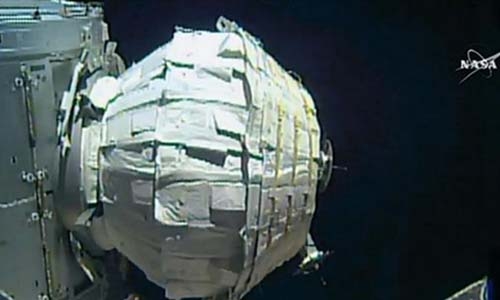NASA inflates spare room in space
Washington: NASA on Saturday successfully expanded and pressurized an add-on room at the International Space Station two days after aborting the first attempt when it ran into problems.
The flexible habitat, known as the Bigelow Expandable Activity Module (BEAM), completed slowly extending 67 inches (170 centimeters) at 4:10 pm (2010 GMT) following more than seven hours during which astronaut Jeff Williams released short blasts of air into the pod's walls from the orbiting lab using a manual valve.
After the expansion was completed, he opened eight air tanks inside BEAM, pressurizing the pod to a level close to the space station's 14.7 pounds per square inch.
"The module is fully expanded at this point and fully pressurized," NASA spokesman Daniel Huot said. "A very successful day today with the expansion of the first expandable human-rated habitat to ever be flown into space."
Astronauts will now perform a series of tests to ensure the pod does not leak air and conduct other preparations before entering it through the station's Tranquility module for the first time in approximately a week, NASA said.
The inflation process may be better described as "unfolding" since it takes very little air to bring the pod to full size, experts said. Only about 0.4 pounds per square inch (psi) is needed to expand BEAM to its full shape.
The expansion caused a popping sound not unlike that of popcorn as the structure slowly filled out, live video feed from the space station on NASA television showed.
NASA is testing expandable habitats astronauts might use on the Moon or Mars in the coming decades.
Related Posts

